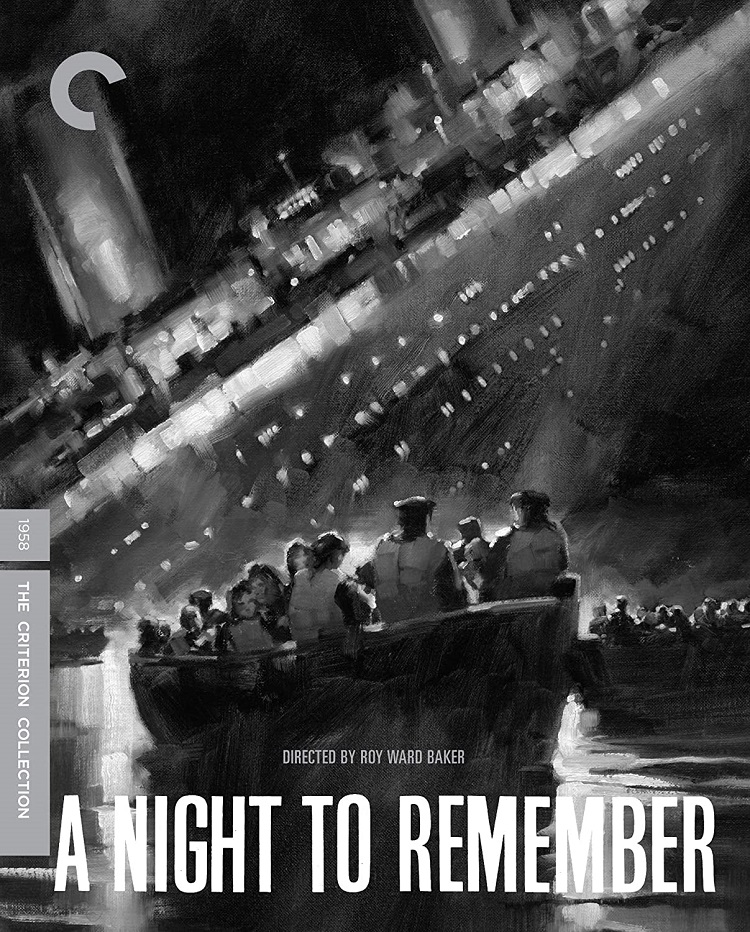
The 100th anniversary of the sinking of the Titanic will be April 14, 2012, and it is being recognized with a number of commemorative events. The Criterion Collection’s new digital restoration of the classic film A Night to Remember (1958) is one. For decades, this was considered the definitive and most accurate account of the disaster, and it has come to be recognized as one of the greatest British films of the 20th century.
Like so many projects before and after though, it was a miracle that A Night to Remember was made at all. When producer William MacQuitty first pitched it, John Davis of the J. Arthur Rank Company showed no interest. He dismissed it as “Just another shipwreck movie. It has been done before, there are no stars in it, and it would be very costly.” MacQuitty replied that “This is not just another shipwreck. This is the end of an era of arrogance.”
Indeed, the arrogance surrounding the folly of the disaster is the key to what makes this such a timeless film. The belief that the ship was literally unsinkable led to the decision (based on aesthetics) of only providing life boats for 1,200 passengers, when the total on board was over 2,200. Another element of the situation that MacQuitty considered absurd was the class warfare. First class passengers paid 875 pounds, while steerage paid 12. “There is no reason for the huge price difference for basically the same accommodations on a five-day cruise other than the arrogance of the rich,” says MacQuitty.
Based on MacQuitty’s successful previous record, Rank eventually green-lit the project. The film was based on the book A Night to Remember by Walter Lord, published in 1955. Lord’s research was invaluable. He wound up interviewing some 64 survivors for first-hand accounts of the events. Without this, the richness of the story would not exist – as it was, a lot of the survivors had already passed away by the time he began writing his book. Although Lord’s book was a hit at the time, today he is something of an unsung hero in all of this.
The film itself is presented as a near-documentary. Unlike James Cameron’s Titanic (1997), there is no love story to distract from the events. The only editorial context is in some marvelous foreshadowing. As the ship is pulling away from the harbor, one of the crew members states that the Titanic is “A symbol of progress of man’s final victory over nature and the elements.” MacQuitty’s contention that the disaster represented the end of the era of arrogance could not be better expressed. The story is told from the point of view of 2nd Officer Charles Herbert Lightoller (Kenneth More), who was the highest-ranking officer to survive the shipwreck.
Late in the night on April 14, 1912, a lookout spots an iceberg. The ship turns, but it is too late, and the Titanic collides with the iceberg. A distress signal is sent out, and efforts begin to signal a ship on the horizon, but to no avail. The radio operator of the Carpathia receives the call however, and they race to help the Titanic. Unfortunately they are four hours away.
Meanwhile, Captain Edward J. Smith (Laurence Naismith) orders the lifeboats to be lowered. The women and children from first and second class are loaded into the boats (with many men attempting to get in as well), but all of the passengers in steerage are locked out. The ship soon sinks, and the third-class passengers are finally allowed up, after all the lifeboats are gone.
The boats get out of the way as the ship sinks, and we see people clinging to debris and overturned lifeboats. Eventually the Carpathia comes and rescues the survivors. At the end of the film, Lightoller states that he will “never be sure again, about anything.”
This Criterion Collection edition contains a second DVD devoted solely to bonus material. Chief among these is the fabulous one-hour documentary “The Making of A Night to Remember” (1993). This features interviews with both William MacQuitty and Walter Lord, and provides some excellent insight into the production of the film, and the work that went into Lord’s book as well. It also incorporates a great deal of behind-the-scenes footage of the models used in the making of the film. Additional extras include “The Iceberg That Sank the Titanic” (2006), a 50-minute BBC documentary. There are also two segments with interviews from survivors, the most notable being the Swedish documentary En natt att minnas (1962).
The new high definition print of the black and white A Night to Remember looks gorgeous. Once again, Criterion have done a remarkable job with a classic film. Although James Cameron’s Titanic is now considered definitive, given the success and production qualities it boasted, A Night to Remember remains every bit the wonder it was upon its initial release in 1958. This is a remarkable film.